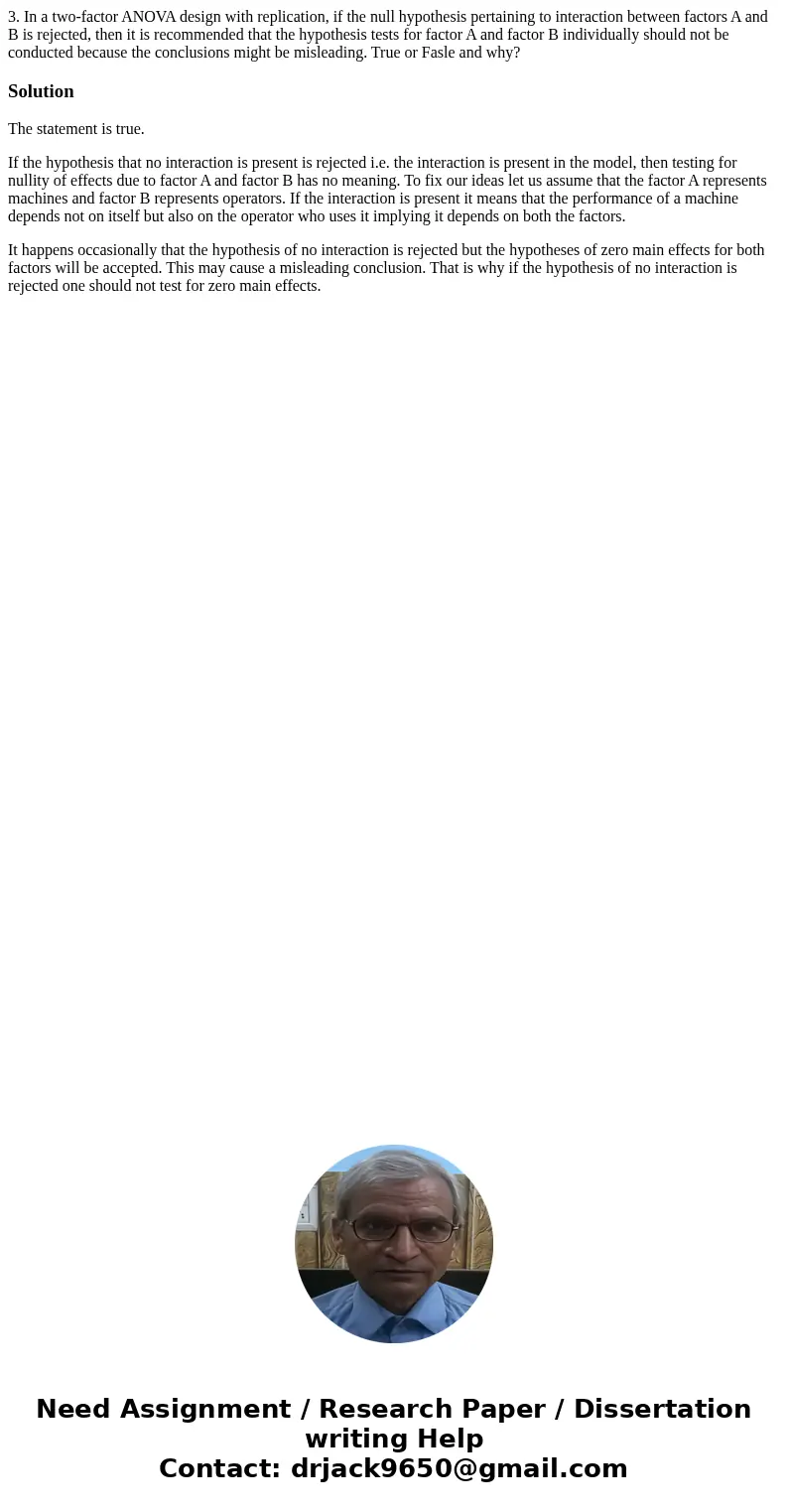3 In a twofactor ANOVA design with replication if the null h
3. In a two-factor ANOVA design with replication, if the null hypothesis pertaining to interaction between factors A and B is rejected, then it is recommended that the hypothesis tests for factor A and factor B individually should not be conducted because the conclusions might be misleading. True or Fasle and why?
Solution
The statement is true.
If the hypothesis that no interaction is present is rejected i.e. the interaction is present in the model, then testing for nullity of effects due to factor A and factor B has no meaning. To fix our ideas let us assume that the factor A represents machines and factor B represents operators. If the interaction is present it means that the performance of a machine depends not on itself but also on the operator who uses it implying it depends on both the factors.
It happens occasionally that the hypothesis of no interaction is rejected but the hypotheses of zero main effects for both factors will be accepted. This may cause a misleading conclusion. That is why if the hypothesis of no interaction is rejected one should not test for zero main effects.

 Homework Sourse
Homework Sourse